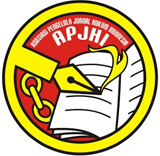Prohibition of Child Recruitment as Soldiers: An International Regulatory Discourse
Abstract
Keywords
Full Text:
PDFReferences
Almohammad, A. (2018). ISIS child soldiers in Syria: The structural and predatory recruitment, enlistment, pre-training indoctrination, training, and deployment. The International Centre for Counter-Terrorism–The Hague, 8, 1–29.
Anaie, T. (2018). Victimized perpetrators: child soldiers in ISIS and the need for a new international legal approach. Rutgers Race & Law Review, 20, 93.
Bates, E. S. (2019). Distorted terminology: the UK’s closure of investigations into alleged torture and inhuman treatment in Iraq. International & Comparative Law Quarterly, 68(3), 719–739.
Burley, A.-M. S. (2017). International law and international relations theory: a dual agenda. In The Nature of International Law (pp. 11–46). Routledge.
Cornu, C. (2016). Preventing and addressing homophobic and transphobic bullying in education: A human rights–based approach using the United Nations Convention on the Rights of the Child. Journal of LGBT Youth, 13(1–2), 6–17.
Coundouriotis, E. (2010). The child soldier narrative and the problem of arrested historicization. Journal of Human Rights, 9(2), 191–206.
Coyne, I., Hallström, I., & Söderbäck, M. (2016). Reframing the focus from a family-centred to a child-centred care approach for children’s healthcare. Journal of Child Health Care, 20(4), 494–502.
Crawford, J. (2018). The current political discourse concerning international law. The Modern Law Review, 81(1), 1–22.
de Guzman Chorny, N., Raub, A., Earle, A., & Heymann, J. (2019). The state of child labor protections in 193 countries: Are countries living up to their international commitments? International Journal of Sociology and Social Policy, 39(7), 609–626.
Fox, L., Wimer, C., Garfinkel, I., Kaushal, N., & Waldfogel, J. (2015). Waging war on poverty: Poverty trends using a historical supplemental poverty measure. Journal of Policy Analysis and Management, 34(3), 567–592.
Gunawan, Y., Aulawi, M. H., Anggriawan, R., & Putro, T. A. (2022). Command responsibility of autonomous weapons under international humanitarian law. Cogent Social Sciences, 8(1), 2139906.
Haer, R., Faulkner, C. M., & Whitaker, B. E. (2020). Rebel funding and child soldiers: Exploring the relationship between natural resources and forcible recruitment. European Journal of International Relations, 26(1), 236–262.
Himonga, C. (2016). African customary law and children’s rights: intersections and domains in a new era. In Children’s rights in Africa (pp. 83–100). Routledge.
Hynd, S. (2021). Trauma, violence, and memory in African child soldier memoirs. Culture, Medicine, and Psychiatry, 45(1), 74–96.
Janet, E. (2016). Persons with Disabilities in International Humanitarian Law–Paternalism, Protectionism or Rights? In Disability, human rights and the limits of humanitarianism (pp. 155–178). Routledge.
Julian, R., & Schweitzer, C. (2015). The origins and development of unarmed civilian peacekeeping. Peace Review, 27(1), 1–8.
Landman, T. (2020). Measuring modern slavery: Law, human rights, and new forms of data. Human Rights Quarterly, 42(2), 303–331.
Larion, A.-P. (2017). Regulation of International Labour Organization on Forced Labour. European Journal of Law and Public Administration, 4(1), 5–11.
Makinde, O. A. (2016). Infant trafficking and baby factories: A new tale of child abuse in Nigeria. Child Abuse Review, 25(6), 433–443.
Matheson, M. J. (2017). The United States position on the relation of customary international law to the 1977 protocols additional to the 1949 Geneva Conventions. In The Development and Principles of International Humanitarian Law (pp. 233–245). Routledge.
Mazurana, D., Marshak, A., & Spears, K. (2019). Child marriage in armed conflict. International Review of the Red Cross, 101(911), 575–601.
Mezmur, B. D. (2016). Children at both ends of the gun: child soldiers in Africa. In Children’s rights in Africa (pp. 209–228). Routledge.
Mittler, P. (2015). The UN Convention on the Rights of Persons with Disabilities: Implementing a Paradigm Shift. Journal of Policy and Practice in Intellectual Disabilities, 12(2), 79–89.
Morris, J., & Dunning, T. (2020). Rearing Cubs of the Caliphate: An examination of child soldier recruitment by Da’esh. Terrorism and Political Violence, 32(7), 1573–1591.
Moynagh, M. (2011). Human rights, child-soldier narratives, and the problem of form. Research in African Literatures, 42(4), 39–59.
Novenario, C. M. I. (2016). Differentiating Al Qaeda and the Islamic State through strategies publicized in Jihadist magazines. Studies in Conflict & Terrorism, 39(11), 953–967.
Punamäki, R.-L., Isosävi, S., Qouta, S. R., Kuittinen, S., & Diab, S. Y. (2017). War trauma and maternal–fetal attachment predicting maternal mental health, infant development, and dyadic interaction in Palestinian families. Attachment & Human Development, 19(5), 463–486.
Quénivet, N. (2017). Does and should international law prohibit the prosecution of children for war crimes? European Journal of International Law, 28(2), 433–455.
Rasakandan, S., & Tehrani, P. (2022). Protection of Children from Recruitment and Use in Armed Conflict: Role of International Legal Framework. Journal of Politics and Law, 15(4), 230.
Şişli, Z., & Limoncelli, S. A. (2019). Child brides or child labor in a worst form? Journal of Labor and Society, 22(2), 313–324.
Sloth, J. J., & Boezaart, T. (2017). The African charter on the rights and welfare of the child. Child Law in South Africa, 424–445.
van Dijk, B. (2018). Human rights in war: On the entangled Foundations of the 1949 Geneva Conventions. American Journal of International Law, 112(4), 553–582.
DOI: https://doi.org/10.18196/jmh.v30i1.19322
Refbacks
- There are currently no refbacks.
Copyright (c) 2023 Mohammad Hazyar Arumbinang, Yordan Gunawan, Andi Agus Salim

This work is licensed under a Creative Commons Attribution-NonCommercial 4.0 International License.
JMH Visitor























